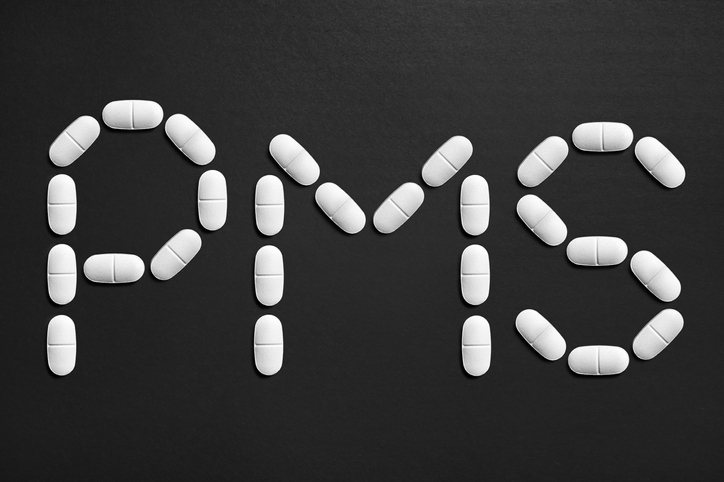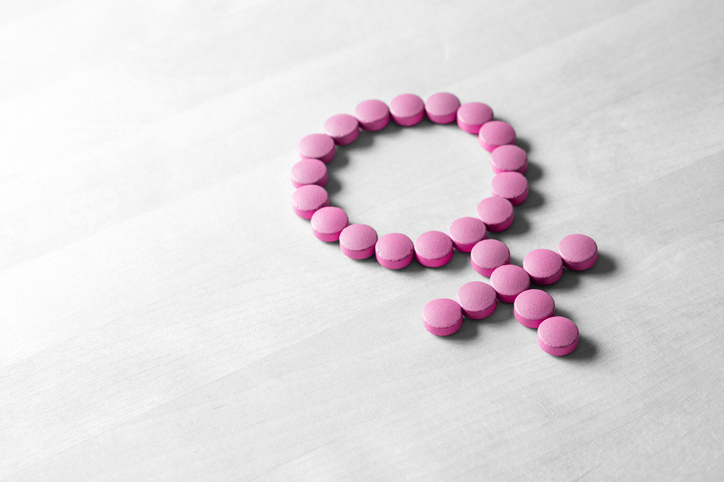PMS is mostly associated with younger women, as we suffer from those painful periods, bloating and terrible moods. We are often told that "it will get better as you get older, or have a family", but unfortunately it seems that may not always be true. If you hoped you had left it all behind you, don’t celebrate too soon as women over 35 are just as likely to be sufferers.
Strangely it is around the age of 40 when some women see signs of what seems to be perimenopause but that actually may be PMS once again responding to your changing hormones. The signs are increased heavy menstrual bleeding, greater irritability, headaches and often food cravings as well. Sadly it seems that if you are suffering in this way it may be a sign that your actual menopause may be difficult too.
Why PMS occurs over 35
This distressing and painful condition is related to hormone imbalance. Once a woman reaches 35 her hormonal pattern starts to shift and hormones can plunge and rise dramatically, with all the accompanying symptoms. This can go on throughout menopause and during this time, the ratio of progesterone to oestrogen is usually very much lower than when you were younger which can result in severe PMS symptoms.
However casual you may have been about nutrition and diet when you were in your twenties, these deficiencies really begin to hit home once you reach 40. Having significantly inadequate levels of calcium, magnesium and B vitamins can make symptoms like poor sleep, irritability, fatigue, muscle cramps, achiness, and food cravings even worse.
Key PMS symptoms and solutions after 35
Hormone balance is key at this age as it around now that the hormonal rollercoaster gets into gear so check for any signs of oestrogen dominance and low progesterone levels. These are the symptoms you need to look out for:
1. If you are becoming much more anxious and irritable then that can mean low progesterone. This is the hormone that keeps you calm and helps lift mood so you stay more centred and less pulled off course by each annoying incident or person!
You can naturally boost your progesterone levels by supplementing with bioidentical natural progesterone and there are also herbs like black cohosh, lemon balm and maca that boost progesterone-like effects in your body to support you.
2. Food cravings are also likely to increase, particularly for sugar and chocolate. These can become two staple food groups when women are under stress! Try to keep your blood sugar levels stable by including some form of protein at every meal and limit sugar where you can. Sometimes chocolate cravings are connected to magnesium deficiency. Ward them off with a good multivitamin that has plenty of magnesium. You can also snack on almonds and pumpkin seeds as they are naturally high in magnesium.
3. Bloating and stomach cramps are classic PMS symptoms and again relate to having low levels of progesterone, compared to oestrogen. Regular, gentle exercise is the answer together with herbs like burdock, and chaste berry, fennel, peppermint, and ginger. These will all help with the digestive upset and nausea that can occur at this time.
4. PMS symptoms naturally lower your libido. After all who feels sexy when bloated and in pain? Progesterone is associated with increased sex drive in women so that could be another bonus for ensuring you have good levels throughout the month.
5. There is also be an emotional component to PMS so coping with that, by leaning on friends and family, alongside good hormonal and nutritional support could be the key to finally overcoming your symptoms.
Strangely it is around the age of 40 when some women see signs of what seems to be perimenopause but that actually may be PMS once again responding to your changing hormones. The signs are increased heavy menstrual bleeding, greater irritability, headaches and often food cravings as well. Sadly it seems that if you are suffering in this way it may be a sign that your actual menopause may be difficult too.
Why PMS occurs over 35
This distressing and painful condition is related to hormone imbalance. Once a woman reaches 35 her hormonal pattern starts to shift and hormones can plunge and rise dramatically, with all the accompanying symptoms. This can go on throughout menopause and during this time, the ratio of progesterone to oestrogen is usually very much lower than when you were younger which can result in severe PMS symptoms.
However casual you may have been about nutrition and diet when you were in your twenties, these deficiencies really begin to hit home once you reach 40. Having significantly inadequate levels of calcium, magnesium and B vitamins can make symptoms like poor sleep, irritability, fatigue, muscle cramps, achiness, and food cravings even worse.
Key PMS symptoms and solutions after 35
Hormone balance is key at this age as it around now that the hormonal rollercoaster gets into gear so check for any signs of oestrogen dominance and low progesterone levels. These are the symptoms you need to look out for:
1. If you are becoming much more anxious and irritable then that can mean low progesterone. This is the hormone that keeps you calm and helps lift mood so you stay more centred and less pulled off course by each annoying incident or person!
You can naturally boost your progesterone levels by supplementing with bioidentical natural progesterone and there are also herbs like black cohosh, lemon balm and maca that boost progesterone-like effects in your body to support you.
2. Food cravings are also likely to increase, particularly for sugar and chocolate. These can become two staple food groups when women are under stress! Try to keep your blood sugar levels stable by including some form of protein at every meal and limit sugar where you can. Sometimes chocolate cravings are connected to magnesium deficiency. Ward them off with a good multivitamin that has plenty of magnesium. You can also snack on almonds and pumpkin seeds as they are naturally high in magnesium.
3. Bloating and stomach cramps are classic PMS symptoms and again relate to having low levels of progesterone, compared to oestrogen. Regular, gentle exercise is the answer together with herbs like burdock, and chaste berry, fennel, peppermint, and ginger. These will all help with the digestive upset and nausea that can occur at this time.
4. PMS symptoms naturally lower your libido. After all who feels sexy when bloated and in pain? Progesterone is associated with increased sex drive in women so that could be another bonus for ensuring you have good levels throughout the month.
5. There is also be an emotional component to PMS so coping with that, by leaning on friends and family, alongside good hormonal and nutritional support could be the key to finally overcoming your symptoms.
* This information is for general interest only. Every woman is unique. Your results may vary.
PMS encompasses a huge range of symptoms - and potential treatments. But some treatments are more successful than others.
Based on the foundation of enhancing natural progesterone, this 3 step plan could be a complete solution for PMS problems
Hear what doctors have to say about natural progesterone and its benefits
Based on the foundation of enhancing natural progesterone, this 3 step plan could be a complete solution for PMS problems
Over 35? Then you could still be at risk of PMS and those symptoms you thought you had left behind long ago
PMS responds very well to progesterone, but there are a few more things that can enhance your response and make a real difference
What exactly is Premenstrual Syndrome and how can you recognise its symptoms?
The causes and effects of PMS can be more complex and interrelated than mainstream medicine allows for.
In the third part of his series on PMS, Dr Coope looks at the treatments available for symptoms relief
In the fourth and final part of his series on PMS Dr Coope discusses the deeper and more gentle holistic approaches to symptoms relief
All information given on this site is for general interest only. Every woman is unique. Your results may vary.









































